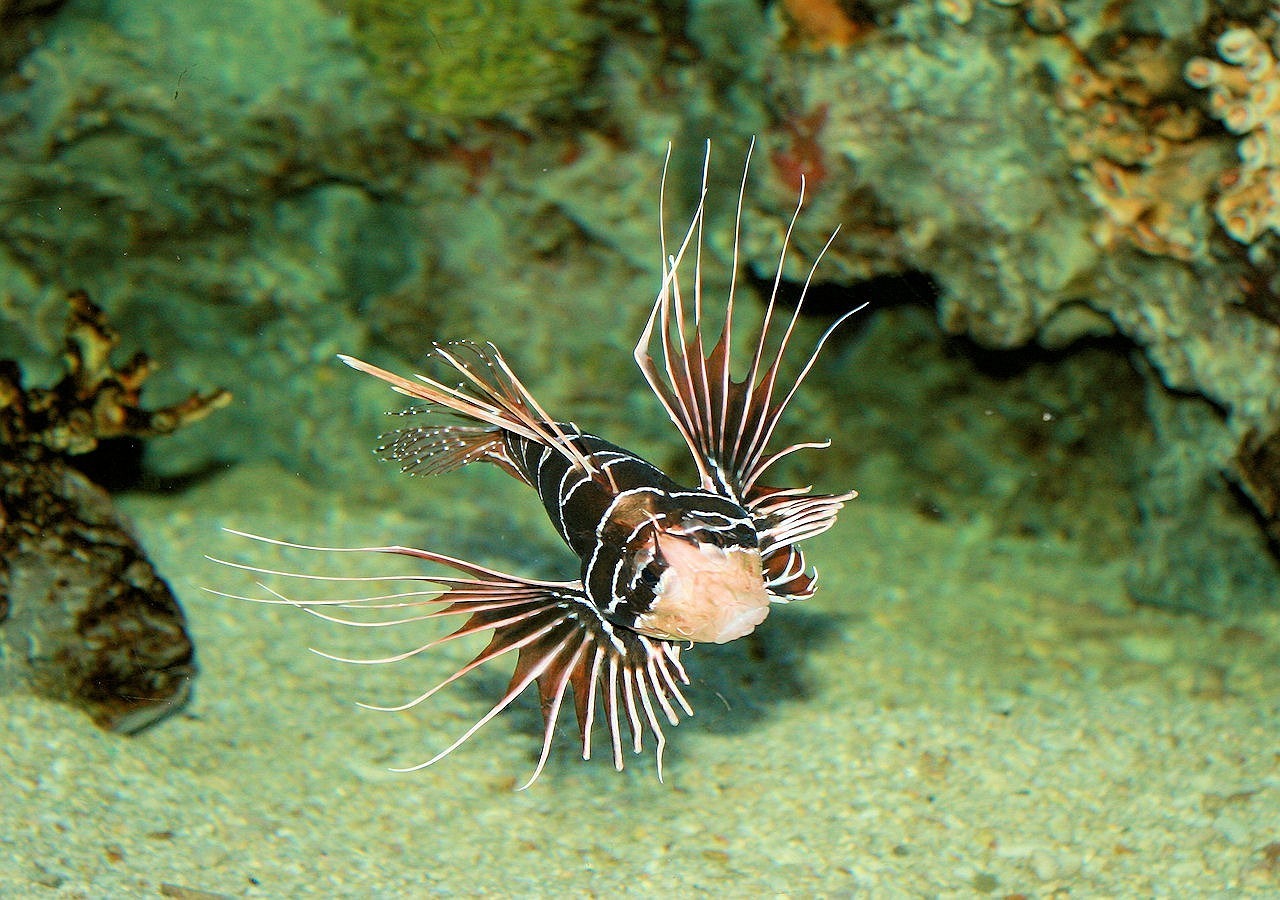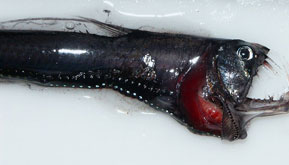Even though the alien world on other planets of our solar system is relatively accessible by scientists, the depths of the ocean in our home planet remain virtually unexplored. Deep beneath the ocean waves, past the sunlight and through the oxygen-deficient zones deep, deep down the water and down some more – we can find the mysterious animals lurking in the dark and deep waters.
1. Frilled shark
Frilled sharks live 5,000 feet deep down the surface of the Pacific Ocean. They are considered as living fossils, as they’re actually one of the surviving species of the shark family, swimming the seas since the time of the dinosaurs millions of years ago. They can grow up to a size of 5 feet and have sharp, three-pointed teeth in 25 different rows. They have a body like an eel, which they can bend when they are about to catch their prey.
2. Blobfish
Considered as one of the ugliest animals on the planet, the blobfish is strikingly jiggly because of its lack of muscles and flesh with lesser density than that of water. However, it doesn’t look bad for the blobfish itself. Its lack of muscle tissue is an advantage for the blobfish because it doesn’t need to exert any effort in order to eat. It simply opens its mouth as it floats about, letting gravity do its trick and munching on any sea critters like small crabs that enter its path. The blobfish can be found within more than 3,900 feet below the ocean, mainly in parts of Australia and Tasmania.
3. Fangtooth fish
The fangtooth is one of the deepest-living fish ever known to man. Their normal habitat is in deep waters of around 6,500 feet to icy cold depths of 16,500 feet. The fangtooth can only grow up to six inches long, but their teeth are the largest size of any fish, considering its proportion to body size. Even though their sharp-mouthed appearance is threatening, they are incredibly safe. They can’t act as a terrifying predator with their co-inhabitants under the ocean because of their poor eyesight. They have to bump into their prey in order to find one.
4. Goblin shark
Goblin sharks are also called vampire sharks because they are never found in the presence of light. It is believed that they are rare and few, but they aren’t on protective lists because scientists cannot estimate their number. These sharks live up to around 4,270 feet below sea level in the Pacific and Atlantic oceans, as well as in the Gulf of Mexico. They like living a mysterious life and they don’t move around much. Like the frilled shark, they are deemed by some scientists as a living fossil, being that it is the only existing survivor of a 125 million-year-old family of shark. Its most striking features are its long, flattened snout; slender, claw-like teeth; and protruding jaw. It can thrust its jaw three inches out of its mouth when reaching for their prey. They also have large livers, indicating that they don’t eat very often.
 5. Pacific viperfish
5. Pacific viperfish
The Pacific viperfish is one of the fiercest predators in the deep ocean. They live at about 13,000 feet below the surface. They reach about only 8 inches long and attracts prey by turning on and off the bioluminescent photophores on their bellies. The viperfish’s jagged, needle-like teeth are so big that they cannot close their mouths with teeth inside. Instead, the teeth curve over the outside of the viperfish’s head, almost reaching their eyes when their mouths are closed.
6. Giant Isopod
Looking like an undesired outcome of an experiment in a science fiction movie, the giant isopod is a creepy-looking creature. They look like big bugs with seven pairs of legs. They can be seen in the depths of the sea up to 6,500 feet in the world around Pacific, Atlantic, and Indian Oceans. Their size range from 12 to 16 inches and their body are protected by thick and strong shells. The giant isopods are merely scavengers, feasting on dead animals that fall from above, but they also catch live prey as sponges and trawl catches. Another thing is their strong resistance to hunger, as they can go four years without eating. It is believed that they have been around since all the continents are still part of the supercontinent Pangea.
7. Vampire squid
Vampire squids are comfortably living at 10,000 feet below the surface. The creature is named “vampire squid” because its eight arms are lined with a single row of suction cups, red eyes and cape-like webbing, resembling that of a vampire. The squid is also an ancient species being the only surviving member of the order Vampyromorphida. It also has a large pair of eyes that are disproportionate to the size of their bodies that can only grow up to six inches. They can be found in mesopelagic and bathypelagic regions of tropical and temperate oceans in the world because its body has adapted to enable itself to live in places with very low oxygen levels.
8. Atlantic wolffish
A glance at an Atlantic wolffish will help you understand why the creature was named that way. Its large teeth that stick out of their mouth even when closed gives them the sinister look, but they are actually not aggressive to people. They use their large canine teeth, powerful jaws and large head to hunt and munch on hard-shelled or spiny invertebrates like crabs, sea snails, and sea urchins. They have long eel-like bodies that can grow to as long as five feet and are as advanced as sculpins.


 5. Pacific viperfish
5. Pacific viperfish